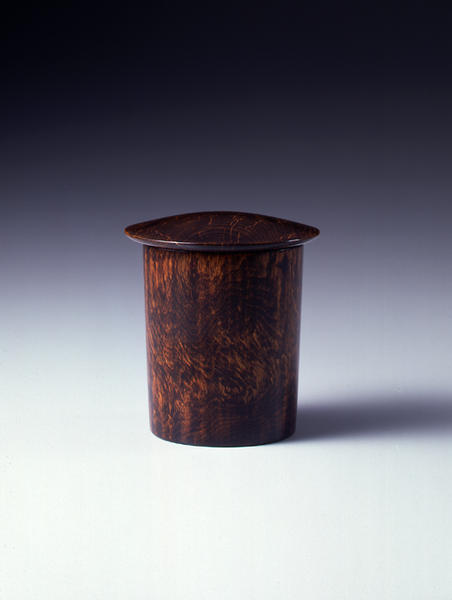Kinrinji-type Tea Container by Kuroda Tatsuaki
- Lacquered wood
Catalogue Entry
Kuroda Tatsuaki was a Kyoto‐born wood and lacquer artist. He participated in Yanagi Soetsu's Mingei movement from its early stages, and created an array of simple, yet dignified works such as the chairs, tables, door decoration and decorative shelves for the new Imperial Palace buildings. He was named a "Living National Treasure" for wood arts in 1970.
This Kinrinji tea container for thin tea is made from natural ivy. According to tradition, when Emperor Godaigo retired to Yoshino during the Nambokucho period, he made a tea container from mountain ivy to take to tea with a monk in the mountains. The oldest example of this style can be found to date from the Muromachi period and thanks to their use in the tea ceremony, examples can be found from various intervening periods. The older versions of this theme have lids which resemble temple roofs and some contain sutra copies. Indeed, some of these small jars may have been originally created to hold sutras, and were then transformed into tea containers. Regardless of this container's extremely simple shape, it has the resonant presence of a large pagoda. Kuroda created many of these Kinrinji tea containers and they were praised as "the pinnacle of wood art." But in fact, this simple natural shape used through the centuries takes almost no special handling to create its beauty.
